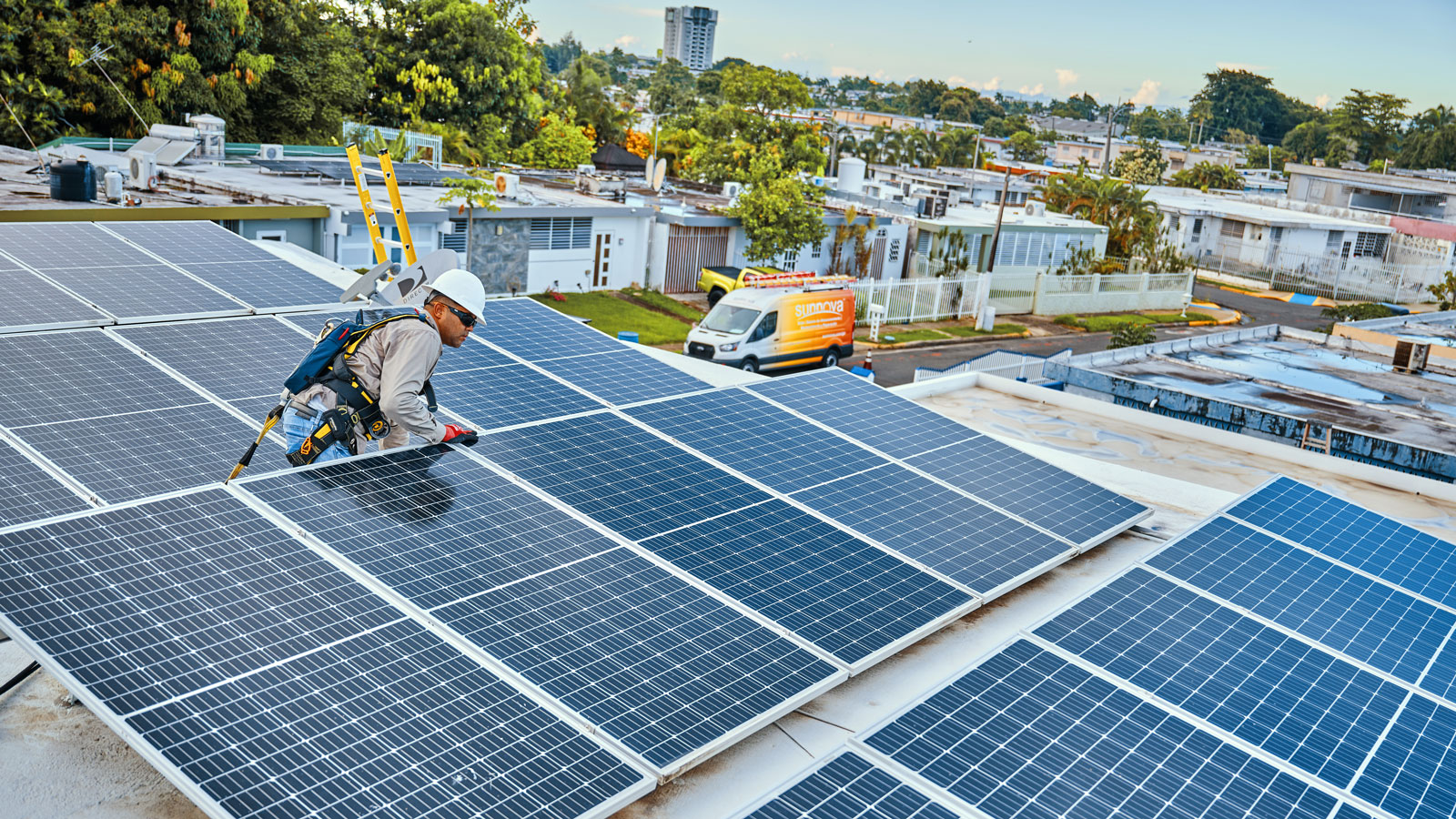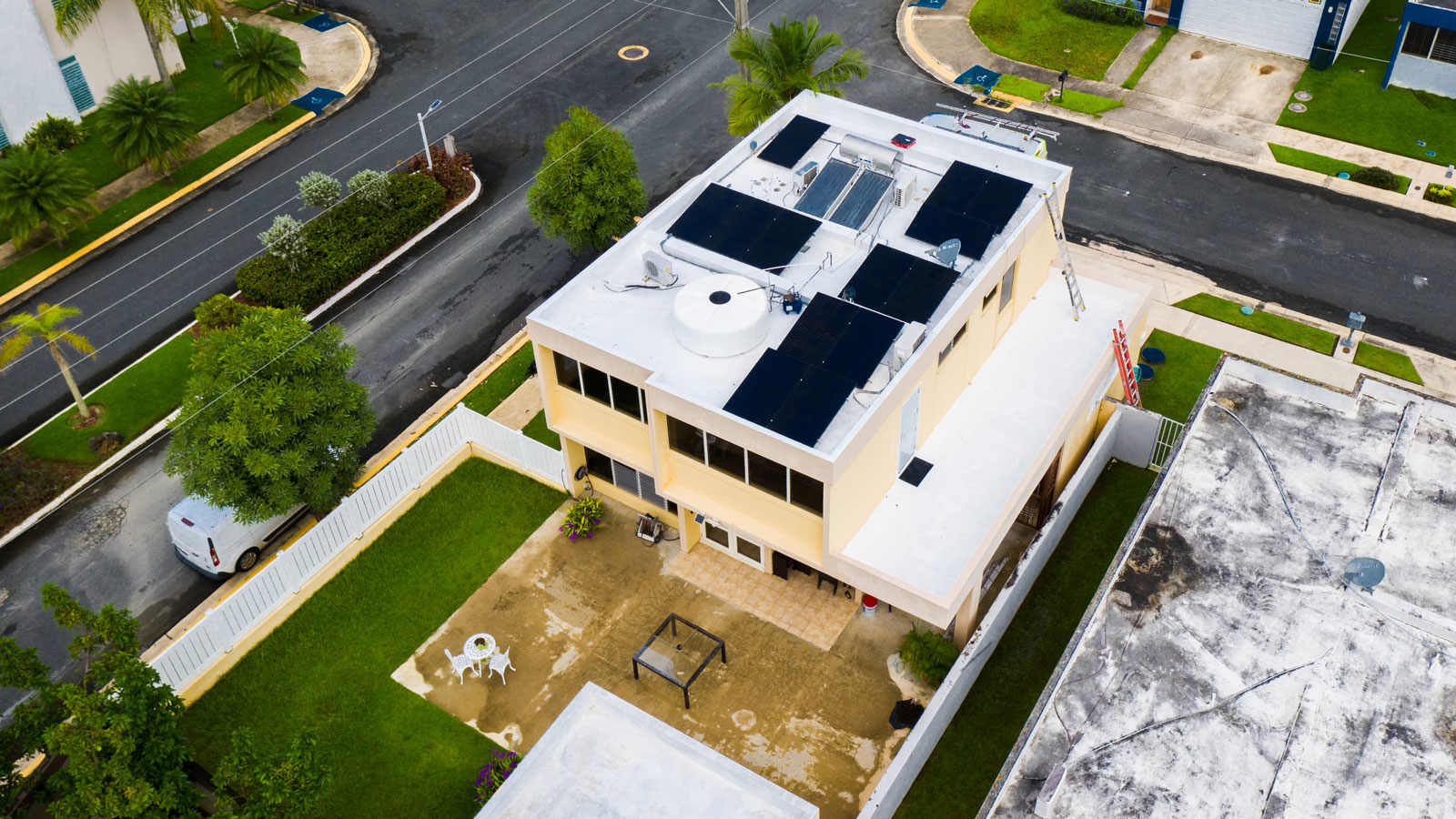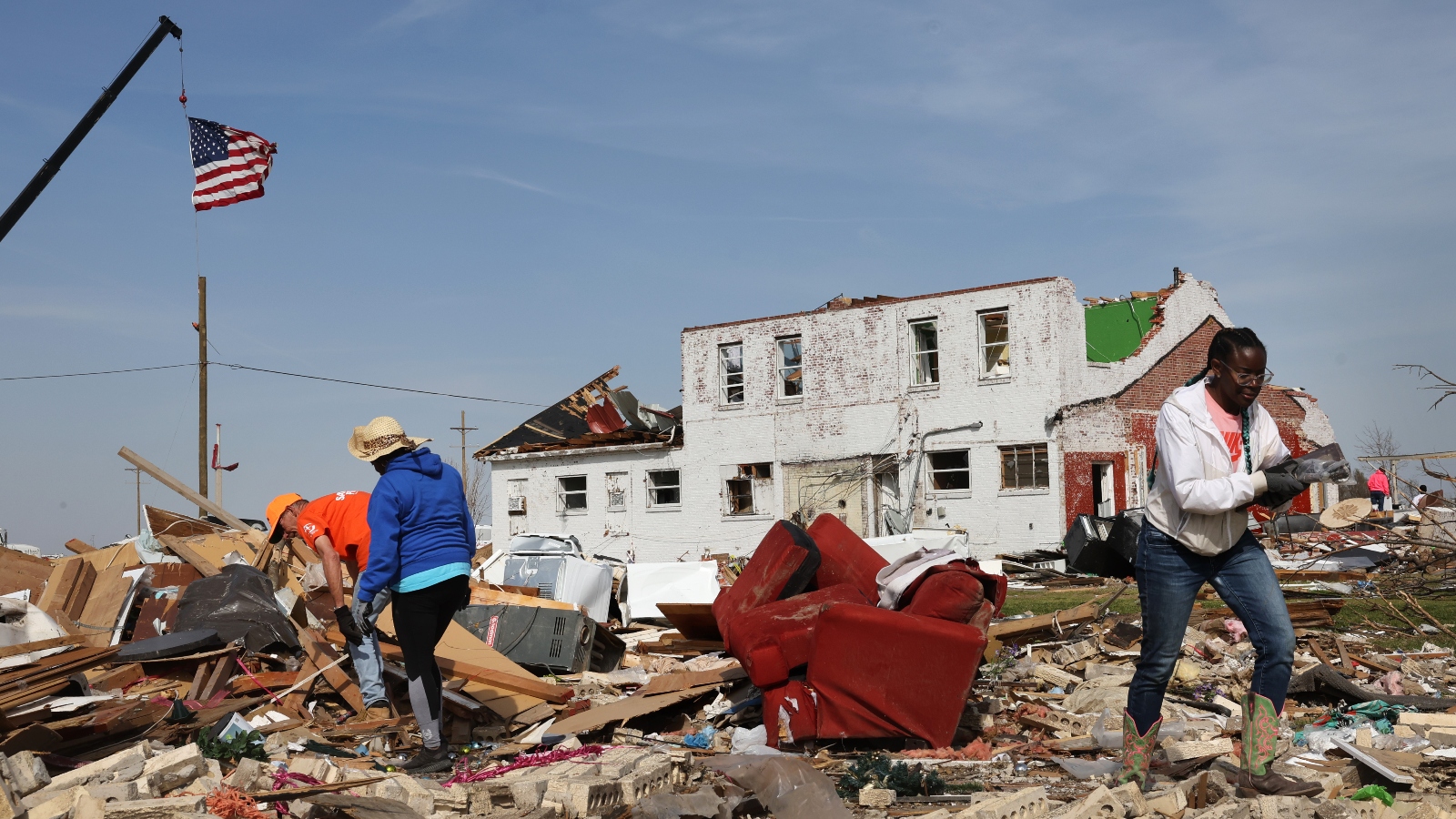The first sign of trouble bubbled up from gopher holes a stone’s throw from Stan Ledgerwood’s front door. The salt water left an oily sheen on the soil and a swath of dead grass in the yard.
It was June 2017, and Ledgerwood and his wife, Tina, had recently built a home on the family farm, 230 acres of green amidst the rolling hills and long horizons of south-central Oklahoma. There they planned to spend their retirement, close to Stan’s parents on land that has been in the family since 1920.
The view from the porch took in Stan’s parents’ house, two rows of pecan trees his great-grandfather had planted in the 1930s, and the forest shielding the Washita River, a muddy brown ribbon flowing along the southern edge of the farm. The nearest town, Maysville, has a population of 1,087.
“The only people who come down our road are either lost or the mailman,” said Stan, a husky man with a biting sense of humor.
Also visible from the porch was metal piping in a red-gated enclosure: an aging oil well.
Like many property owners in this rural farming community, the Ledgerwoods own their land but only a meager percentage of the oil beneath it. Pump jacks nod up and down in nearby fields of soybeans and alfalfa.

Mark Olalde/ProPublica
Stan’s 84-year-old parents, Don and Shirley Ledgerwood, have watched oil companies drill multiple wells on their farm, where the family had grown crops and run cattle. The family received small royalty payments from the oil production. And decades later, they had to allow a wastewater pipe to cross the farm when another company, Southcreek Petroleum Co. LLC, redrilled the well behind the red gate. The well, which plunged about 9,000 feet into the earth, was repurposed to inject salt water into the geologic formation and push any remaining oil up to other wells.
A new production boom never materialized for Southcreek in this slice of Garvin County, and the family didn’t hear much from the oil company.
“When they were through here,” Don said, “we thought we were finished with the oil business.”
But then a corroded valve malfunctioned underground, injecting brine into the soil, according to a report by a Southcreek contractor.
A few days after the release was discovered in June 2017, Stan met with Southcreek and the Oklahoma Corporation Commission, the state’s oil and gas regulatory agency. At the meeting, the company characterized the incident as a “small spill,” the Ledgerwoods later alleged in court. It was unclear how long the leak lasted, but the saltwater plume had already saturated the soil and killed 2 acres of vegetation by the time it broke the surface, according to state oil regulators.
Samples analyzed a month later by Oklahoma State University found that the soil’s concentration of chloride, which occurs in the type of salt water injected into the well, had risen to more than 12 times the state’s acceptable level and was “sufficiently high to reduce yield of even salt tolerant crops.”
Other tests showed that chloride levels in the family’s water well had spiked to more than five times what the Environmental Protection Agency deems safe. The tests didn’t look for other contaminants like heavy metals that are often left behind by the oil production process.
The Ledgerwoods entered a grim limbo, wondering what toxins might be in the cloudy water coming from their faucets and waiting for someone to address the problem.
They experienced firsthand the policy failures that have allowed the oil and gas industry to reap profits without ensuring there will be money to clean up drill sites when the wells run dry and the drillers flee. A recent ProPublica and Capital and Main investigation found a shortfall of about $150 billion between funds set aside to plug wells in major oil-producing states and the true cost of doing so. When the Ledgerwoods later sought to hold the drillers accountable, the family learned how easily oil companies can use bankruptcy to leave their mess to landowners.
Don began traveling 30 miles round-trip to Walmart to buy bottled water. Stan and Tina’s steel pots rusted after being washed, and their 2-year-old great-niece’s skin became irritated and inflamed after repeatedly washing her hands while they potty-trained her. In a text message, the girl’s mother described her hands as looking like they had “a burn.”
Southcreek did not respond to ProPublica and Capital & Main’s requests for comment. In court, the company denied calling the release “small” and argued that the groundwater contamination was contained to the two impacted acres the state identified.
The Ledgerwoods watched in horror as the farm that represented their past and their hope for the future languished. Somehow it had to be fixed, they believed. The rest of the family had also considered retiring to the farm, said Steve Ledgerwood, Stan’s brother and a lawyer in nearby Norman, but that plan was going up in smoke.
“We’ve gone out and made our living and done what we were supposed to do, and we wanted to have a relaxed, peaceful life,” Steve said. “And it has been anything but that.”
“Our only source of fresh water”
The Ledgerwoods and other farmers in Garvin and McClain counties started worrying the moment the oil industry returned in 2012.
Southcreek and other oil companies wanted to resume extraction from the oil field underlying Maysville. But the reservoir was old, so they proposed flooding it with water to force the oil to the surface. Don Ledgerwood and other local farmers signed a petition beseeching the Corporation Commission to reject the companies’ plans.
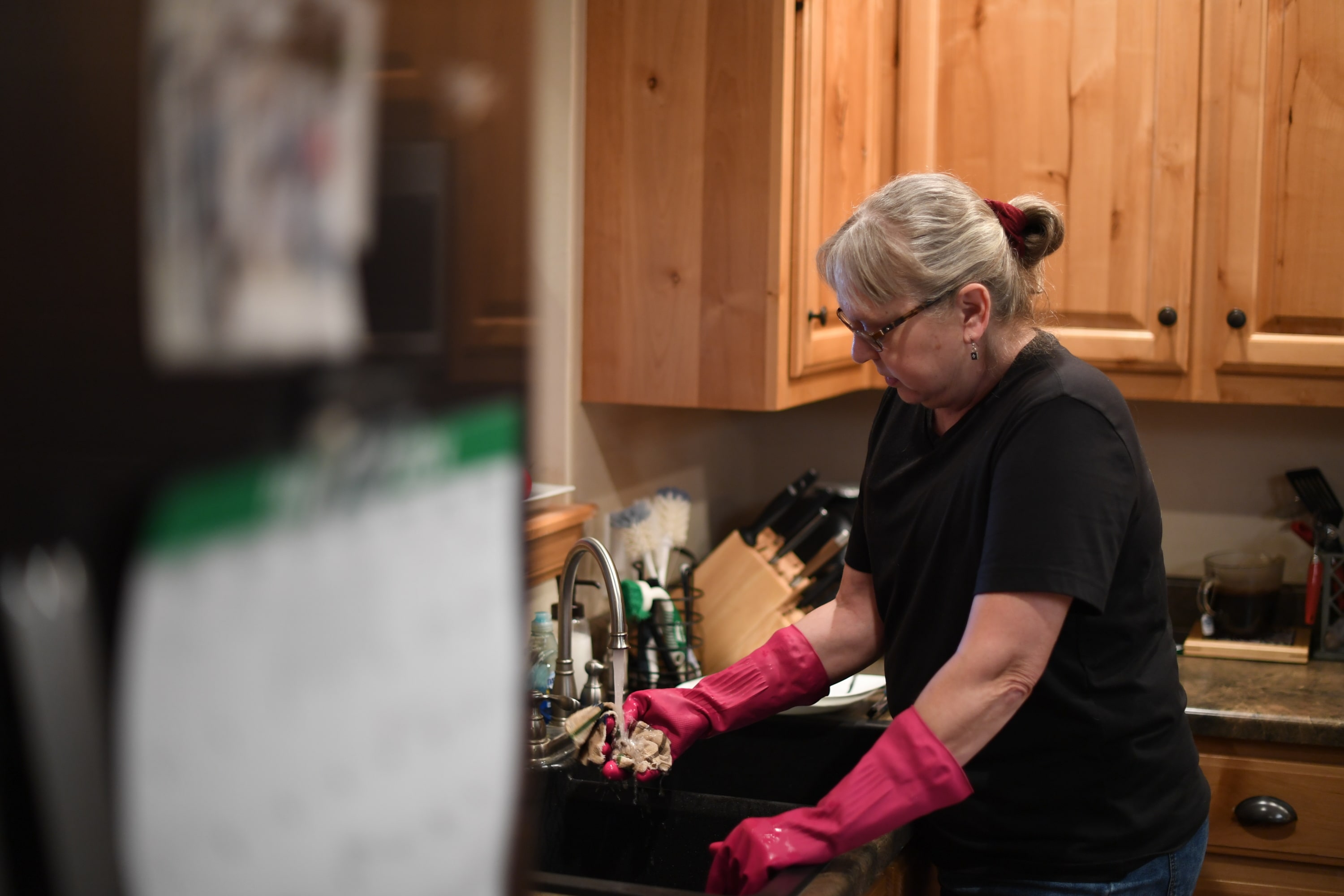
Mark Olalde/ProPublica
“This aquifer is our only source of fresh water for our homes, families and livestock,” the farmers wrote. “We fear that any error in development and production could lead to devastating contamination to this critical freshwater supply.”
As is common in American oil fields, property rights in this part of Oklahoma often create split estates, where one person owns the land while another owns the underlying minerals, such as oil and gas. The owner of the minerals has a right to drill, even if the landowner would prefer they didn’t.
The farmers didn’t sway the Corporation Commission, and in 2014, Southcreek redrilled the well on the Ledgerwoods’ land. The company was small but produced about $4 million worth of oil and gas from the area, adjusted for inflation, according to an analysis of Oklahoma Tax Commission data.
State regulators are supposed to minimize the risks that accompany oil and gas production, including by mandating that drillers plug old wells to prevent them from leaking greenhouse gases into the atmosphere or leaching toxic chemicals into the land and water.
In theory, cleanup is guaranteed by financial instruments called bonds that companies fund and that regulators can put toward the cost of retiring wells if drillers go bankrupt or walk away. Sufficient bonding creates an incentive for companies to plug their own wells: Once the work is completed, the company gets its bond back. But when bonding requirements are lax, there’s little to deter drillers from forfeiting their bonds and leaving their wells as “orphans.”
Oklahoma allows companies to cover an unlimited number of wells with a single $25,000 bond. Alternatively, companies can satisfy bonding requirements by proving they are worth at least $50,000, in which case they often do not have to set aside any real money in bonds. Corporation Commission spokesperson Matt Skinner said the agency was unable to find a single case where the state recouped enough money to plug a well from companies that relied solely on the latter option.
To cover all of its roughly 30 wells, Southcreek held a $25,000 bond and filed paperwork to show it was worth at least $50,000. (Different agencies disagree on how many wells Southcreek operated.)
The well that spoiled the Ledgerwoods’ drinking water is one of the 18,500 that the Corporation Commission classifies as orphaned. “We would not be surprised to see that number go higher,” Skinner said. State taxpayers will ultimately be on the hook to plug many of them, or the state can leave the wells unplugged, but many will continue leaking.
Some orphan well cleanup in Oklahoma is funded by a voluntary 0.1 percent fee paid by industry on the sale of oil and natural gas. The Oklahoma Energy Resources Board spent $156 million of the funds collected from this fee over the past three decades. The state has an additional orphan well fund with several million dollars in it.
But Oklahoma has more than 260,000 unplugged wells — behind only Texas — according to data from energy industry software firm Enverus. To plug and clean up the state’s wells could cost approximately $7.3 billion, according to an analysis of state records. Oklahoma has just $45 million in bonds.
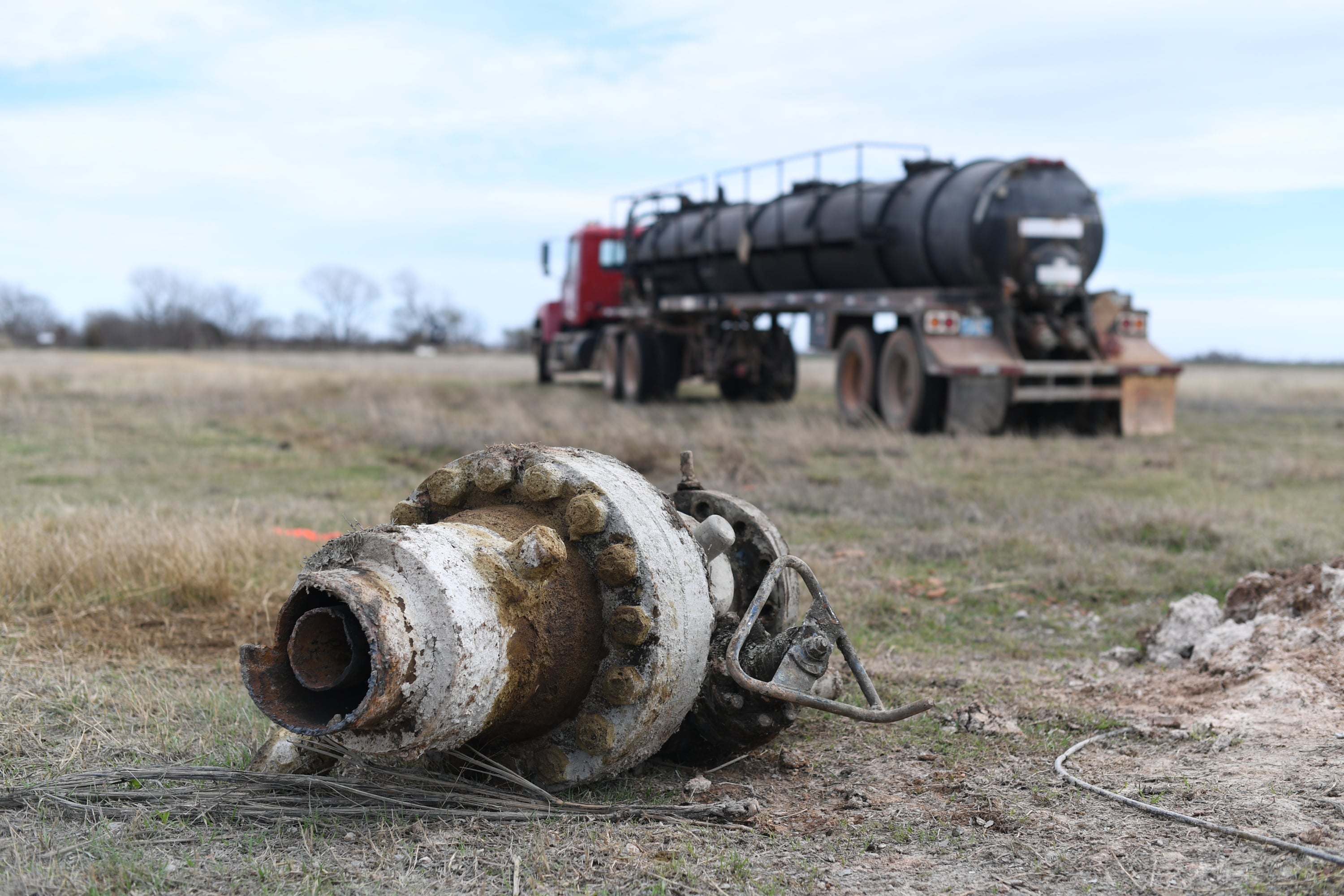
Mark Olalde/ProPublica
The oil industry’s bonds are “shockingly inadequate,” said Peter Morgan, a Sierra Club senior attorney. “It’s clear that abandoning wells and leaving communities and taxpayers to foot the bill to clean them up is baked into the oil and gas industry business model.”
At the Capitol in Oklahoma City, which features repurposed oil derricks outside its main entrance, Republican state Rep. Brad Boles has tried for several years to address the shortfall. This year, he introduced a bill to create a tiered bonding system based on the number of wells a company operates, increasing the highest required bond to $150,000.
“We have a huge liability in our state that we’re trying to get better control of,” he said, acknowledging that his bill would only be a partial solution. “It’s a lot better than it was, but it’s nowhere near where we need to be.”
The Oklahoma House of Representatives and a Senate committee both passed it unanimously, but the bill didn’t receive a vote on the Senate floor. Boles pledged to run a similar bill next session.
“They’re doing you a favor if they clean up”
Shortly after the 2017 brine release, Southcreek began cleaning up with funds from an insurance policy. Fox Hollow Consultants Inc., an environmental consulting firm working with Southcreek, warned in a report that “the remediation of ground water impacted by saltwater is at best a difficult undertaking, costly, and often not effective.”

Mark Olalde/ProPublica
A stream of trucks rumbled down the Ledgerwoods’ once-quiet gravel road as workers removed enough dirt to fill 750 dump trucks and pumped more than 71,000 gallons from the Ledgerwoods’ water well.
But the dangerous concentrations of chloride didn’t change, according to Fox Hollow’s report.
A family who leased the Ledgerwoods’ farmland decided not to plant a crop and removed their cattle.
Nearly two years after the spill was discovered, the company drilled new water wells next to each house, but questions about the safety of drinking the water persisted. Southcreek eventually halted its cleanup, and the Corporation Commission deemed the incident resolved.
“It’s your own property, but you’re made to feel like they’re doing you a favor if they clean up their pollution,” Stan Ledgerwood said.
The Ledgerwoods considered moving. A nearby farm was for sale. Although it was half the acreage with only one house, the water was clean and they could distance themselves from the debacle on their farm. So they held an auction for their farm in June 2019.
Their property had been appraised to be worth around $1 million before the spill. They feared bids would be low — they had disclosed the water issues to potential buyers — yet the offers from the auction were shocking, with bids for the whole farm coming in at $450,000.
Potential buyers’ “first question was about the water, and I couldn’t say it was safe,” Stan said.
Still, the Ledgerwoods needed to pay their attorneys, so they sold nearly all the land, about 200 acres, including the fields that earned them income. The family kept the two houses, with the injection well sitting in the field between them.
The same week as the auction, the Ledgerwoods sued Southcreek. The family’s lawsuit also named as defendants Wise Oil & Gas No. 10 Ltd. and Newkumet Exploration Inc. — which each owned an interest in the oil Southcreek was pumping — as well as the companies that manufactured and sold the well’s corroded valve. The family sought reimbursement for expenses related to the spill, monetary damages and an order that the oil companies finish removing the contaminated soil and water.
In court, Newkumet denied responsibility because it did not operate the well, while the other companies argued that the failed valve was not defective.
On a recent, unseasonably warm winter day, with a mackerel sky hanging over the property, Stan and Tina Ledgerwood talked about what brought them back to the farm. Stan had worked for three decades at the Oklahoma Electric Cooperative, a nonprofit utility, while Tina held an administrative role at the University of Oklahoma, and they looked forward to a peaceful retirement.
“There’s a draw to the beauty here,” Tina said.
There were also family memories stretching back a century. Tina recalled taking her niece to camp along the Washita, where sandbars interrupt the river’s meandering flow and willows grow on the red dirt banks.
Her niece still talked about eating the best hamburger of her life on one of those excursions, Tina said with a laugh. “It’s frustrating,” she added, her tone shifting, “because you look out there and it’s not yours anymore.”
An escape hatch
Progress in the lawsuit was short-lived. In November 2019, shortly after the Ledgerwoods’ attorney sent discovery requests to Wise Oil & Gas, the company filed in a Texas court for voluntary Chapter 7 bankruptcy — a full liquidation of its assets.
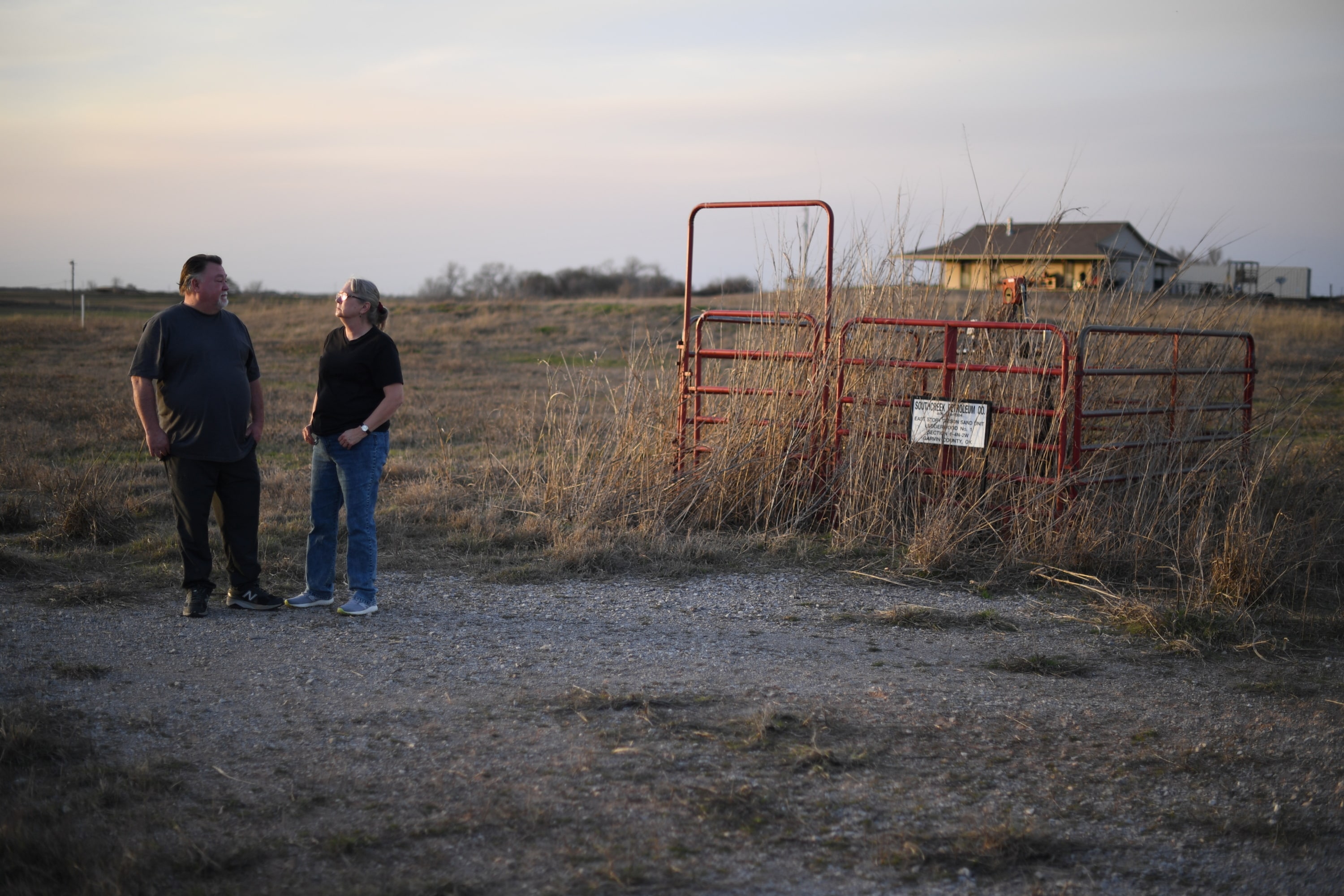
Mark Olalde/ProPublica
Company executives acknowledged they declared bankruptcy to avoid legal fees associated with the Ledgerwoods’ suit, according to court records.
Bankruptcy court has become an easy escape hatch for the industry to shed its costly obligations. More than 250 oil and gas companies in the U.S. filed for bankruptcy protection between 2015 and 2021, bringing about $175 billion in debt with them, according to research from law firm Haynes and Boone. (Haynes and Boone is representing ProPublica in several Texas lawsuits.)
Sen. Jeff Merkley, an Oregon Democrat, said it is “outrageous” that oil executives can pay themselves handsomely before offloading liabilities via bankruptcy. He is preparing a Senate bill to amend the Bankruptcy Code to address this pattern in the oil industry.
“They privatize the profits, and then they dump the costs on the taxpayer, which is an outrageous arrangement that needs to end,” Merkley said, adding that “this is not just one company in one place. This is a practice that has been exquisitely developed by the industry.”
Josh Macey, a University of Chicago law professor who studies bankruptcy, said that “one of the most significant benefits you get when you file for bankruptcy protection is the automatic stay,” which puts other cases on hold while the bankruptcy is ongoing.
The Wise Oil & Gas bankruptcy halted the Ledgerwoods’ suit.
So the Ledgerwoods ventured into labyrinthian bankruptcy court proceedings as creditors. But the bankruptcy filings for Wise Oil & Gas — which owned a 20 percent stake in the oil underlying the Ledgerwood farm — listed between $1 million and $10 million in liabilities against less than $33,000 in assets.
While Wise Oil & Gas appeared to be underwater, financial and legal documents showed that the company was one node in a sprawling business empire run by the wealthy Cocanougher family of North Texas.
Alongside their extended family, brothers Daniel and Robert Cocanougher own the web of businesses that included real estate holdings, golf courses, trash services, charitable organizations and more. A company representative estimated in court that the family controlled more than 100 companies. The entire operation was managed by Cocanougher Asset Management #1 LLC out of an office in North Richland Hills, Texas, near Fort Worth.
Wise Oil & Gas was kept afloat by more than 30 loans from other Cocanougher companies, chiefly Wise Resources Ltd., which shared an office with the oil company, according to records filed in court. The loans ensured the oil company had enough cash to operate, but it otherwise hovered around insolvency. Wise Oil & Gas periodically held less than $0 in its account, internal records revealed in court show.
The Ledgerwoods would never see any money from the Cocanoughers’ businesses.
“A pretty ordinary situation”
In bankruptcy, secured creditors, whose debt is backed by collateral, are first in line to claim proceeds from the liquidating company’s assets. Unsecured creditors — such as the Ledgerwoods — are paid if there are funds left over. Even further back in line are environmental claims, such as money to plug wells.
One secured claim stood out: $1.9 million for Wise Resources. According to legal filings, a few months before declaring bankruptcy, Wise Oil & Gas had consolidated its “outstanding obligations” and transferred them to Wise Resources, although the deal was backdated to the previous year.
During one deposition, Jamie Downing, a lawyer for the Cocanoughers, went back and forth with Steve Ledgerwood, who occasionally represented his family, over whether Robert Cocanougher was “two different people” when he signed documents for Wise Oil & Gas and for Wise Resources.
“Robert Cocanougher is signing documents in his capacity as general partner of one entity or the manager of another entity,” Downing said. “They would not be the same person.”
Even though the Cocanoughers were wealthy, the layers of corporate entities between the family and the oil limited their liability for the saltwater spill. It is difficult to “pierce the corporate veil” and tie a company’s actions to individuals, so executives finding protection in bankruptcy is “a pretty ordinary situation,” Macey explained. “We’ve gone too far in shielding investors from the cost of corporate misconduct.”
Daniel and Robert Cocanougher and company attorneys did not respond to requests for comment. In court filings, the family and its companies argued that they were not responsible for the brine release and were within their rights to file for bankruptcy protection.
The Ledgerwoods soon realized the bankruptcy case would lead to neither the cleanup of their farm nor Wise Oil & Gas paying for the damage, so they filed a motion to dismiss it, sanction the Cocanoughers and force the company back into their Oklahoma lawsuit.
The judge overseeing the case was Mark X. Mullin, a former corporate bankruptcy attorney himself. At first, he acknowledged the Ledgerwoods’ plight. “To be clear, the court has a lot of empathy for what happened to the Ledgerwoods,” he said during an August 2021 hearing.
But two months later, Mullin ruled against the Ledgerwoods. He disagreed that Wise Oil & Gas had entered bankruptcy to shed bad investments and dodge cleanup obligations. He blasted the Ledgerwoods for requesting sanctions against the Cocanoughers.
“Merely because the Ledgerwood Creditors have been damaged by the saltwater contamination, this does not provide them with an unfettered right to retaliate or lash out against unrelated and far-removed targets, such as the Cocanougher Sanction Targets,” Mullin wrote.
If the Ledgerwoods wanted to continue seeking damages against the Cocanoughers and their businesses, they would have to pay the oil company’s attorneys’ fees, about $107,000, Mullin ruled.
Mullin declined to comment.
In September 2022, the trustee overseeing Wise’s liquidation reported that, after paying administrative fees, the company had no money for creditors. The Ledgerwoods withdrew their claim.
“I can’t afford to come in and clean it up”
The Ledgerwoods weren’t the only ones taking a financial hit. Southcreek, the well’s operator, also entered bankruptcy protection and began offloading its wells. Cleaning them all up could cost taxpayers nearly $1 million, based on the Corporation Commission’s average cost to plug a well.
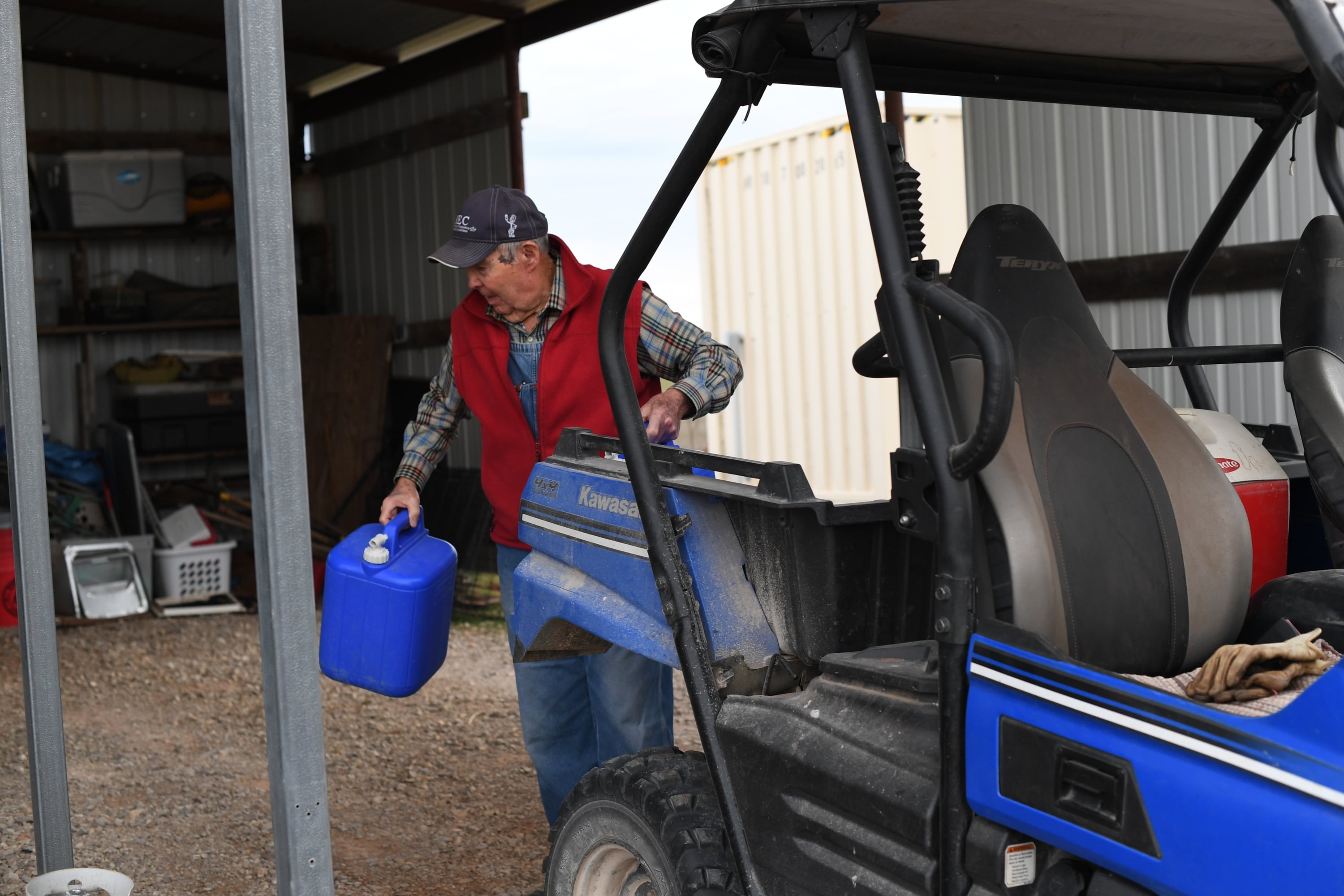
Mark Olalde/ProPublica
Even before the company liquidated, Southcreek executive Gus Lovelace admitted to the state that the company had stopped maintaining its wells, according to Corporation Commission records.
The company left some wells to the state as orphans, including the injection well that fouled the Ledgerwoods’ land. Some ended up in the hands of other oil companies, although those, too, appear to be on the verge of becoming wards of the state.
Michael Brooks, a neighbor of the Ledgerwoods, lives on a farm that his father-in-law worked before him — they’ve put in more than 50 years between the two generations. On a recent winter morning, Brooks showed ProPublica and Capital & Main a 3-acre drill site that scars his land and provides him no royalties.
The plot would be Bermuda grass pasture for cattle, but the paddock instead hosts two inactive oil wells and huge tanks that the Ledgerwoods believe held the salt water that fouled their land. Brooks has to retrieve cows that slip through the barbed wire fence around the site and chew the wells’ rusting metal and drink wastewater.
“I’m at a complete loss,” he said from beneath the brim of a hat embroidered with the logo of an oil and gas pipeline company. “I can’t afford to come in and clean it up. I wouldn’t even know where to start.”
Brooks has for years tried to reach the companies that own the wells, calling phone numbers on the signs posted around them. No one ever answered or called back, he said.
ProPublica and Capital & Main’s attempts to contact the owners were also fruitless. Court records indicate several of the Southcreek wells on Brooks’ farm and other nearby properties were sold out of bankruptcy. But the first company that purchased them is not a registered oil operator in Oklahoma, and the Corporation Commission has no record of the business taking them over.
The idle wells were then transferred to another oil company, but, when asked about that transfer, Corporation Commission staff said they had made a mistake in approving it and would try to revoke it. The best Brooks can now hope for is the state declaring that the wells are orphaned and plugging them.
“It’s just so frustrating because it’s just here. We look at it every day outside our windows,” Brooks said, adding, “It’s been nothing but a pain.”
“We’ll never have back what we had”
Nearly seven years after brine first poured from gopher holes on the Ledgerwood farm, most of the land has been sold. But the well is still there, rusting behind a curtain of dry weeds.
“We don’t get these years back,” Stan Ledgerwood said. “There’s no way to pay for that. We’ll never have back what we had.”
Stan and Tina drink from their new water well. But Don and Shirley Ledgerwood, Stan’s parents, don’t trust the water that flows from their faucets, as their house sits at a lower elevation than the injection well and water tests have shown occasional increases in the salt concentration.
Don’s back is slightly hunched, but his sprightliness belies his 84 years. He still cuts the expanse of grass surrounding his old brick house, and Stan long ago gave up asking to do it for him. “He doesn’t do it right,” Don said, as he filled 5-gallon blue plastic jugs with water from Stan’s well. In one form or another, Don has been hauling water for six years.
As he hoisted the jugs into his off-road vehicle, Don lamented that landowners have to allow oil companies to drill on their property, only to see those operators avoid the costly cleanup.
“That’s not right,” he said.
The sun was rising higher, and Don had more chores to do. So he finished loading the water jugs and whisked them down the gravel road, kicking up dust that hung in the air alongside his parting words.
This story was originally published by Grist with the headline Oil companies contaminated a family farm. The courts and regulators let the drillers walk away. on May 19, 2024.



